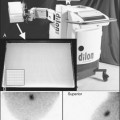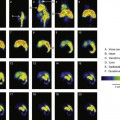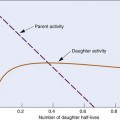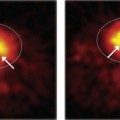chapter 1 What Is Nuclear Medicine?
a Fundamental Concepts
The science and clinical practice of nuclear medicine involve the administration of trace amounts of compounds labeled with radioactivity (radionuclides) that are used to provide diagnostic information in a wide range of disease states. Although radionuclides also have some therapeutic uses, with similar underlying physics principles, this book focuses on the diagnostic uses of radionuclides in modern medicine.
b The Power of Nuclear Medicine
The power of nuclear medicine lies in its ability to provide exquisitely sensitive measures of a wide range of biologic processes in the body. Other medical imaging modalities such as magnetic resonance imaging (MRI), x-ray imaging, and x-ray computed tomography (CT) provide outstanding anatomic images but are limited in their ability to provide biologic information. For example, magnetic resonance methods generally have a lower limit of detection in the millimolar concentration range (≈ 6 × 1017 molecules per mL tissue), whereas nuclear medicine studies routinely detect radiolabeled substances in the nanomolar (≈ 6 × 1011 molecules per mL tissue) or picomolar (≈ 6 × 108 molecules per mL tissue) range. This sensitivity advantage, together with the ever-growing selection of radiolabeled compounds, allows nuclear medicine studies to be targeted to the very specific biologic processes underlying disease. Examples of the diverse biologic processes that can be measured by nuclear medicine techniques include tissue perfusion, glucose metabolism, the somatostatin receptor status of tumors, the density of dopamine receptors in the brain, and gene expression.
c Historical Overview
The origins of nuclear medicine1 can be traced back to the last years of the 19th century and the discovery of radioactivity by Henri Becquerel (1896) and of radium by Marie Curie (1898). These developments came close on the heels of the discovery of x rays in 1895 by Wilhelm Roentgen. Both x rays and radium sources were quickly adopted for medical applications and were used to make shadow images in which the radiation was transmitted through the body and onto photographic plates. This allowed physicians to see “inside” the human body noninvasively for the first time and was particularly useful for the imaging of bone. X rays soon became the method of choice for producing “radiographs” because images could be obtained more quickly and with better contrast than those provided by radium or other naturally occurring radionuclides that were available at that time. Although the field of diagnostic x-ray imaging rapidly gained acceptance, nuclear medicine had to await further developments.
The biologic foundations for nuclear medicine were laid down between 1910 and 1945. In 1913, Georg de Hevesy developed the principles of the tracer approach2 and was the first to apply them to a biologic system in 1923, studying the absorption and translocation of radioactive lead nitrate in plants.3
Stay updated, free articles. Join our Telegram channel

Full access? Get Clinical Tree






